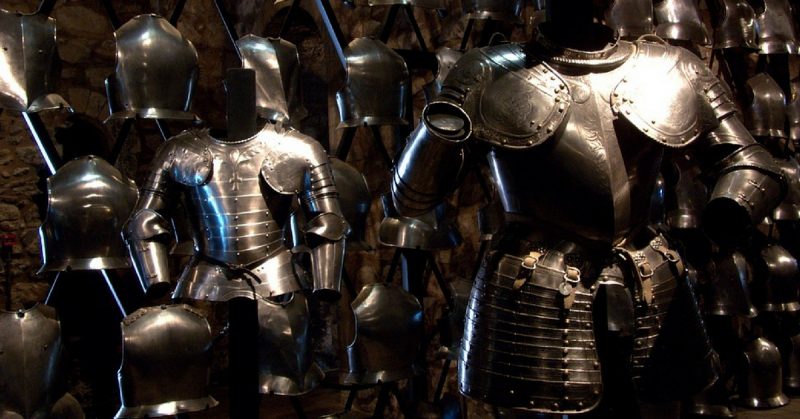More than any other artifact of war, armor dominates visual images of medieval Europe. From the chainmail carefully stitched onto each warrior in the Bayeux Tapestry to the heavy jousting armor worn by knights in films, it fills our mental picture of those times.
Armor changed significantly over the Middle Ages – far more so than weapons. Even within these shifting phases, the armor worn depended on upon the wealth and resources of the wearer. To understand the most common types of armor is to understand a great deal about change and society during that age.
Quilted Jackets
The cheapest and most common form of armor was the quilted jacket. It was not medieval armor as we imagine it – metal shining in the sunlight, iron providing a solid layer that could stop a cut. Instead, it was something made in the same way as ordinary clothing – a jacket, but with padded layers.
These absorbed the force of blows, softening the impact of blunt weapons and reducing the chance that a sword or an arrow would penetrate flesh. It was the poor soldier’s armor – cheap to make, readily available, but often ineffective against well-made weapons.
Cuir Bouilli
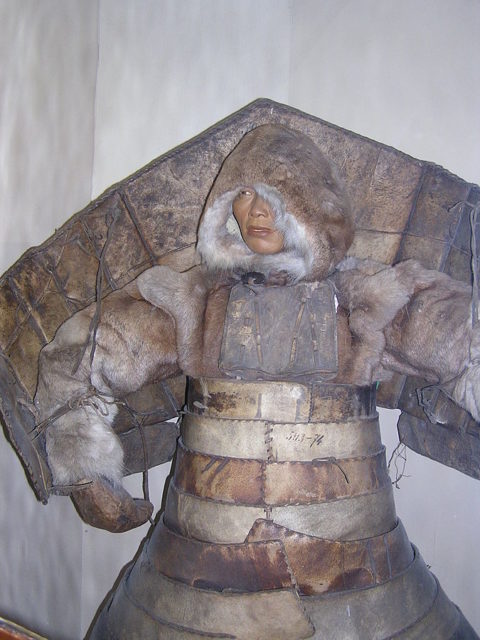
By boiling leather and treating it with other substances, tanners and armorers could turn it into the next cheapest form of armor – hardened leather, or Cuir bouilli. The thickness, toughness and general effectiveness of this armor varied with the leather and the skill of the person treating it.
The shape of Cuir bouilli armor was usually similar to pieces of plate armor. A soldier might have arm or leg guards made from leather, or a plate protecting his chest. Pieces might be added to other armor, such as a quilted jacket or suit of chainmail, to add extra protection. By the fourteenth century, many English infantrymen wore a few mismatched pieces of Cuir bouilli or metal armor that they had inherited or acquired.
Chainmail Hauberk
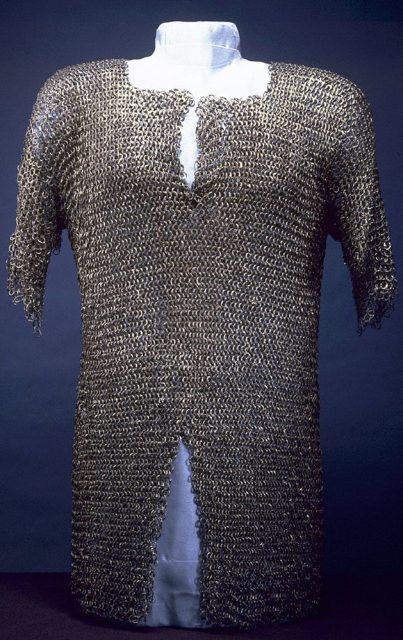
Throughout the Middle Ages, the fighting elite wore metal armor, offering them great protection than leather or cloth could have done. This began with chainmail, as worn throughout the Dark Ages and never entirely abandoned until gunpowder made metal armor obsolete. Made out of interlinked rings of metal, producing it was a time consuming and laborious task. Flexible enough to allow movement, it helped to spread the impact of blunt force attacks and could block slashing or stabbing blows.
A chainmail hauberk, as worn by the Norman knights in the Bayeux Tapestry, was a classic example of this. It covered the whole torso, descending from there into a split skirt that protected the upper legs. Wide sleeves gave freedom of movement and protection for the arms. It often included a coif – a chainmail hood – and was accompanied by a solid metal helmet to give the head added protection.
Chainmail was the armor that first marked out the aristocratic elite. Their wealth gave them access to better protection, making them vastly more likely than their followers to survive on the battlefield, as well as visually reinforcing their status as a group apart from common men.
Reinforced Mail
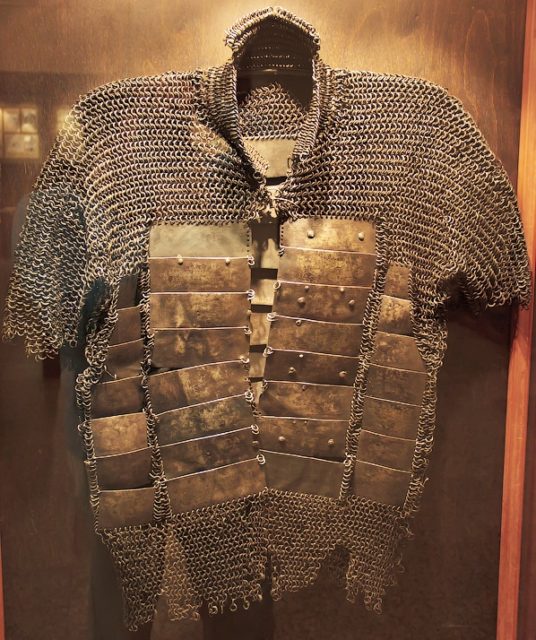
In the 13th century, additions started to be made to chainmail in Western Europe. Pieces of plate metal, or sometimes boiled leather, were attached to the chainmail, reducing the chances of a blade or point penetrating the armor by forcing a gap in the rings.
Early reinforcements were often on the knees and elbows. Joints were particularly vulnerable to attack, and damage to them could be crippling in both the short and long term. Over time, shin and arm guards were added, as well as plates on the body. Increasingly sophisticated metalwork led to articulated gauntlets protecting hands and wrists.
Within the aristocracy, the availability of increasingly expensive but protective and prestigious armor helped to reinforce the varying social status of nobles, with the wealthiest wearing growing amounts of metal plate.
Breastplates
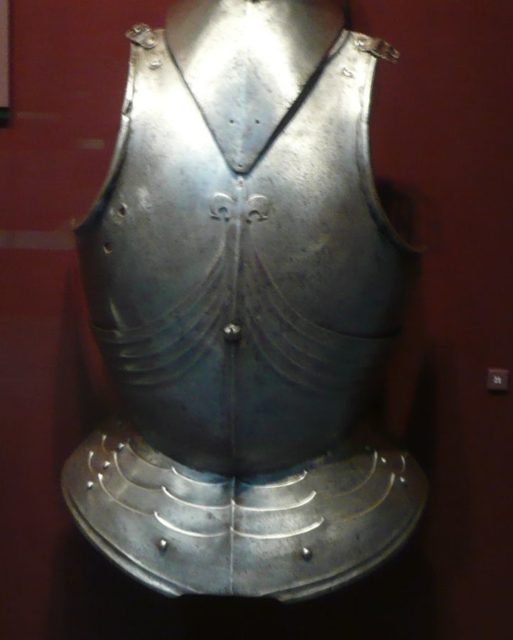
The logical culmination of reinforcement was the metal breastplate. It usually consisted of two pieces, a front and a back, fastened together at the wearer’s sides and shoulders. Worn over chainmail, it provided a solid shell that could be pierced by very few weapons and that spread the force of a blow, reducing the chance of a severe impact on any part of the torso.
Possibly developed at first for tournament fighting, the breastplate soon gained a place as a common piece of battlefield armor among the wealthy.
Full Plate Armor
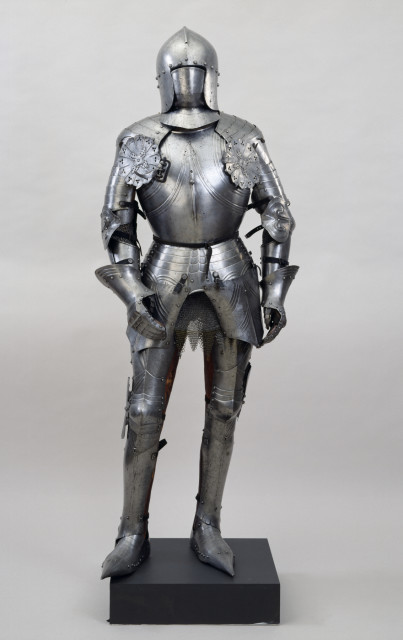
With so many separate pieces of plate mail armor in action, it was a small step to reach full plate. This is the armor in which knights are most often shown in modern popular culture, the all-enshrouding suit that hid the wearer’s face and transformed the shape of their body, turning them into a figure at once both more and less than human.
With full plate, almost every part of the body was covered in carefully shaped and jointed sheets of metal. The helmet, once a separate piece worn with chainmail, was now part of the whole, and regularly covered the entire head including the face.
Heavy hand weapons and narrow waxed arrow heads were developed to penetrate this armor, yet even against these it often remained invulnerable. Infantrymen would have to knock a knight down and work a blade through the joints in the armor if they were to have any realistic chance of penetrating it. As at Agincourt, a huge flurry of attacks could shake the wearer but seldom drew blood.
The Trapper
It is a sign of the way life was valued that the horses of the wealthy could be better armored than ordinary infantry. Many were clothed in cloth armor, but some wore a trapper – a covering of full chainmail – accompanied by a metal chanfron on the head. By the end of the Middle Ages, a few horses were even provided with their own plate mail.
Source:
- David Chandler and Ian Beckett (eds) (1994), The Oxford History of the British Army.
